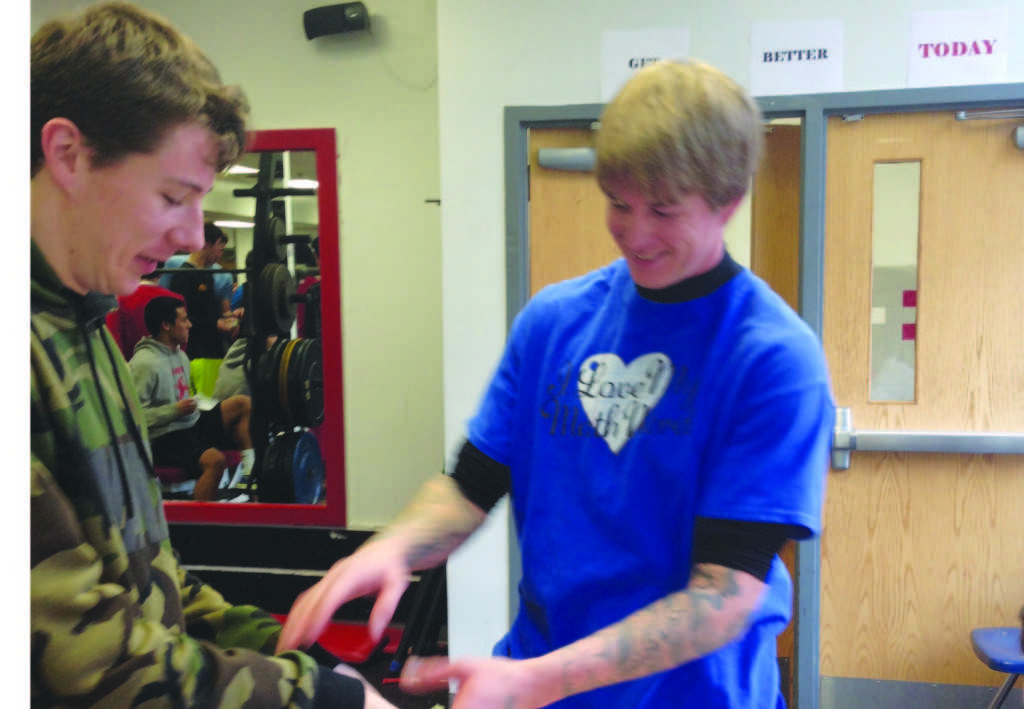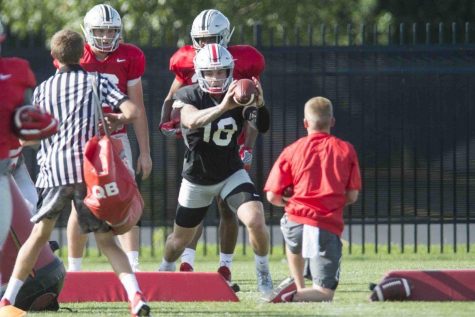Motivate, Dedicate, Dominate
At 4 a.m. everyday, Coach Carl Klein is up and active while most people are still asleep.
In addition to his early rising, Coach Klein does static stretching and dynamic stretching, then works out for approximately 2 to 2.5 hours. After he completes this process, he cools down, eats breakfast, then showers and goes to work.
I push myself to the limit everyday. I make sure that I always do a little better each day,” Klein said. “That is the only way you can push your body to get better.”
Coach Klein pushes his body to it’s highest limits everyday, though his training techniques are rather unconventional.
“Yes, I run and lift weights like most people, but the race is not just that. The race pushes your body to the limits in unusual ways, so my training is unusual,” Klein said.
Klein will chop wood for several hours, or drag a log for several miles. Some of the training he has experimented with include carrying an 80 pound log five miles on the road, carrying a person up and down the bleachers for an hour, and running on a treadmill for 30 minutes carrying a 45 pound weight.
His extensive training also includes crawling under barbed wire for 100 yards in dense mud, flipping tractor tires, hitting a tire with a sledge hammer repeatedly, and moving numerous pallets of stone 30 yards, then moving them back 30 yards.
“I make sure to stretch and workout everyday. I eat right and take my vitamins,” Klein said. “I stay fit because when I workout, I make sure that I give 100% all the time. I push myself to the limit everyday.”
Outside of running and participating in grueling physical tasks, Carl Klein enjoys spending time with his wife, who works as a math teacher at AHS.
In his former career, Klein was in the Army for many years, proudly serving the country. He was not able to coach because of his busy schedule, but after retiring from the military, he was given the chance to coach at AHS and took it without question. He now coaches indoor Track & Field which is a huge passion for him. In addition, Klein is currently on a winter dodgeball team. In the other seasons, he participates on 4 softball teams.
“My goal as a coach is to make sure that my student athletes excel in their academics and excel on the field. Our theme this year is ‘Motivate, Dedicate and Dominate.’ I want them to always stay motivated and motivate each other to work harder,” Klein said.
Not only does Klein want his students to excel athletically, but as well as in every aspect of their life especially school.
“I want them to stay dedicated to their school work and teammates and when that is all said and done I want them to dominate in their races.” Klein said.
Coach Klein had a long and fruitful career in the U.S. Army for several years. He participated in numerous 5k runs, 10k runs, and half, as well as full, marathons.
Though after all this, these running challenges grew old and lost their sense of challenge for Klein, so he started to compete in obstacle course racing because it was a new challenge for him to try. He has since grown tired of even these courses, and has chosen to participate in the Spartan Death Race.
“I am doing the Death Race because I want to see how far I can physically and mentally push my body. It wasn’t to see if I can compete with top endurance racers in the world. It is a race of a lifetime and I want to know where I stand as an athlete.”
Coach Klein is just one example of the 300 elite athletes attempting to challenge their mental and physical prowess in competing in the Spartan Death Race.
The Death Race has been deemed the “World’s Most Challenging Endurance Race.” The race’s website stated, “There are millions of running races, thousands of marathons, hundreds of triathlons, and dozens of ultra marathons, but there is only one Death Race.” The 48 to 72 hour race will begin in the woodlands of Pittsfield, Vermont, on June 27.
“I think [coach Klein running in the Death Race] is just crazy. I think he’s out of his mind but I admire him for it. I also saw the video [of the Death Race] and it was just too much,” junior Astrid Ligonde said.
The most unique piece of this race is that the competitors do not know what they are getting themselves into. The only information they are given is the annual theme of the race; this year the theme is “The Explorer.” Competitors were told to read the journals of Sir Edmund Hillary, Shackleton and Lewis & Clark to get an idea for what their journey would entail. In addition, the explorers are given a gear list, each item on it weighing over 50 pounds.
“When I tell people about this race they think I am crazy and don’t understand why I would do it. But I don’t want to be just like everyone else. I want to be an elite athlete.”
This challenging race causes competitors to accomplish a numerous amount of difficult mental and physical tasks while on a 40-mile course which weaves through the woodlands of Vermont.
Over the duration of the Death Race, competitors may be required to chop wood for several hours, or complete a 30 mile hike with a weighted pack to the top of a mountain, while reciting a Bible verse or the Presidents of the U.S.
In addition, the racers may have to do rather unconventional things such as chop onions or build a fire with only a couple of logs. “Just like life, the Death Race is designed to push and aggravate people to such a point that even the most stoic eventually fail,” cofounder of the Death Race and Founder of the Reebok Spartan Race Joe De Sena said.
“These athletes are willing to complete the journey at all costs. The fact that people endured for 70 hours to see what they are made of is just remarkable and awe-inspiring.”




